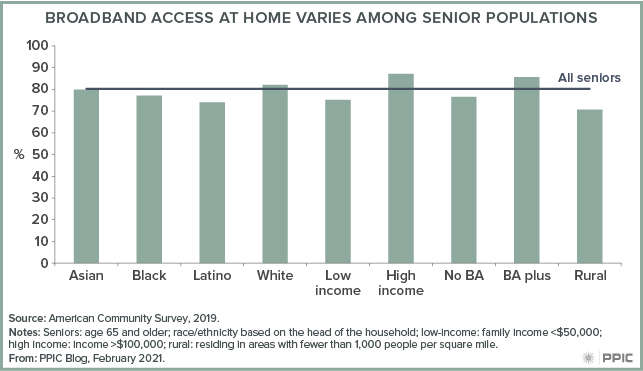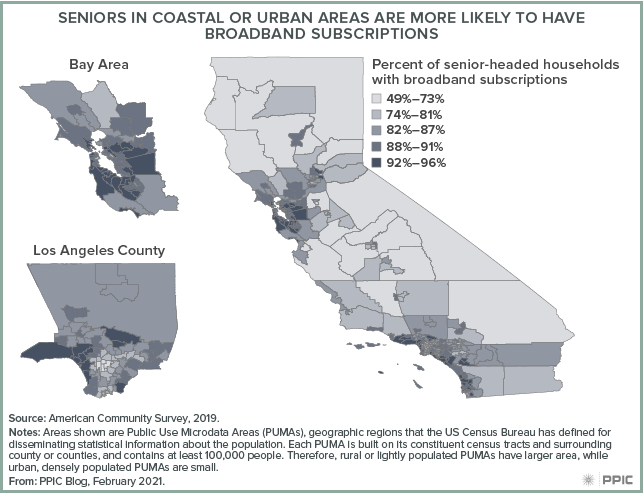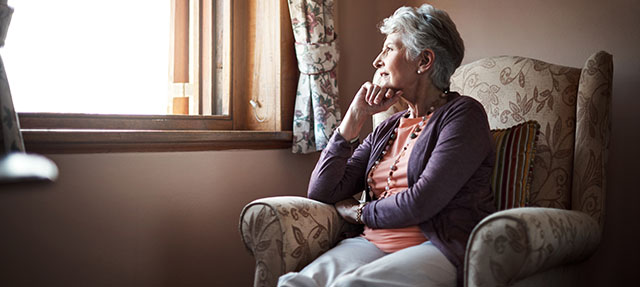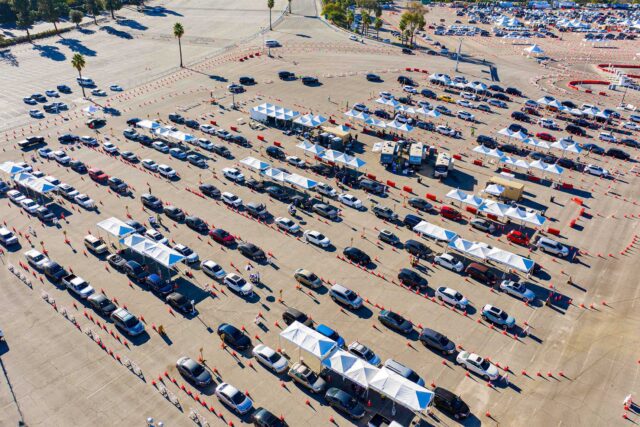California is home to 5.5 million seniors, based on 2019 national estimates, excluding those living in group quarters such as nursing homes and long-term care facilities. With many counties now moving into Phase 1B of the vaccine distribution plan, Californians 65 and older have become eligible to receive their first dose of the COVID vaccine. Seniors must rely on the internet to check vaccine availability and to set up online appointments, but inequitable access to broadband may compound challenges for many communities already hit hard by the pandemic.
Twenty percent of seniors across the state do not have broadband access at home—access is lower among Latino (26%), low-income (25%), and less educated seniors (23%). Nearly 30% of seniors in rural areas do not have broadband and 22% have no internet access at all.

Across regions, variation in access is striking. In most of rural Northern California, seniors subscribe to broadband at rates between 50% and 75%, and the situation is similar in the San Joaquin Valley and the Sierras. Meanwhile, their counterparts in the Bay Area, Southern Coast, and Sacramento metro regions typically subscribe at rates above 90%.
The rural/urban distinction is not definitive, though—senior residents of even the most lightly populated regions of Riverside County are fairly well connected, at rates of around 85%, while some urban areas of central and southern Los Angeles County have among the lowest subscription rates.

Under pandemic conditions, access to public resources like libraries—where many seniors may go to use free computers or internet—has become even more limited. The most recent federal stimulus package included $3.2 billion emergency broadband relief to help eligible families cover up to $50 per month toward subscriptions. But the average monthly broadband cost is $68 across the US.
The federal funding is welcome support and could help expand existing local efforts to bring internet services to more seniors and more California communities. However, these strategies so far have tended to be fairly small-scale —and therefore may affect relatively few people—or carry limitations on duration or eligibility.
Governor Newsom issued an executive order in August 2020 that requires state agencies to work together to bridge the digital divide; the resulting coordination should enable the state to take full advantage of that federal support. Ensuring Californians have reliable access to broadband is crucial to a smooth rollout of the vaccines—and both endeavors will demand cooperation among agencies as well as coordination between federal- and state-level efforts.





